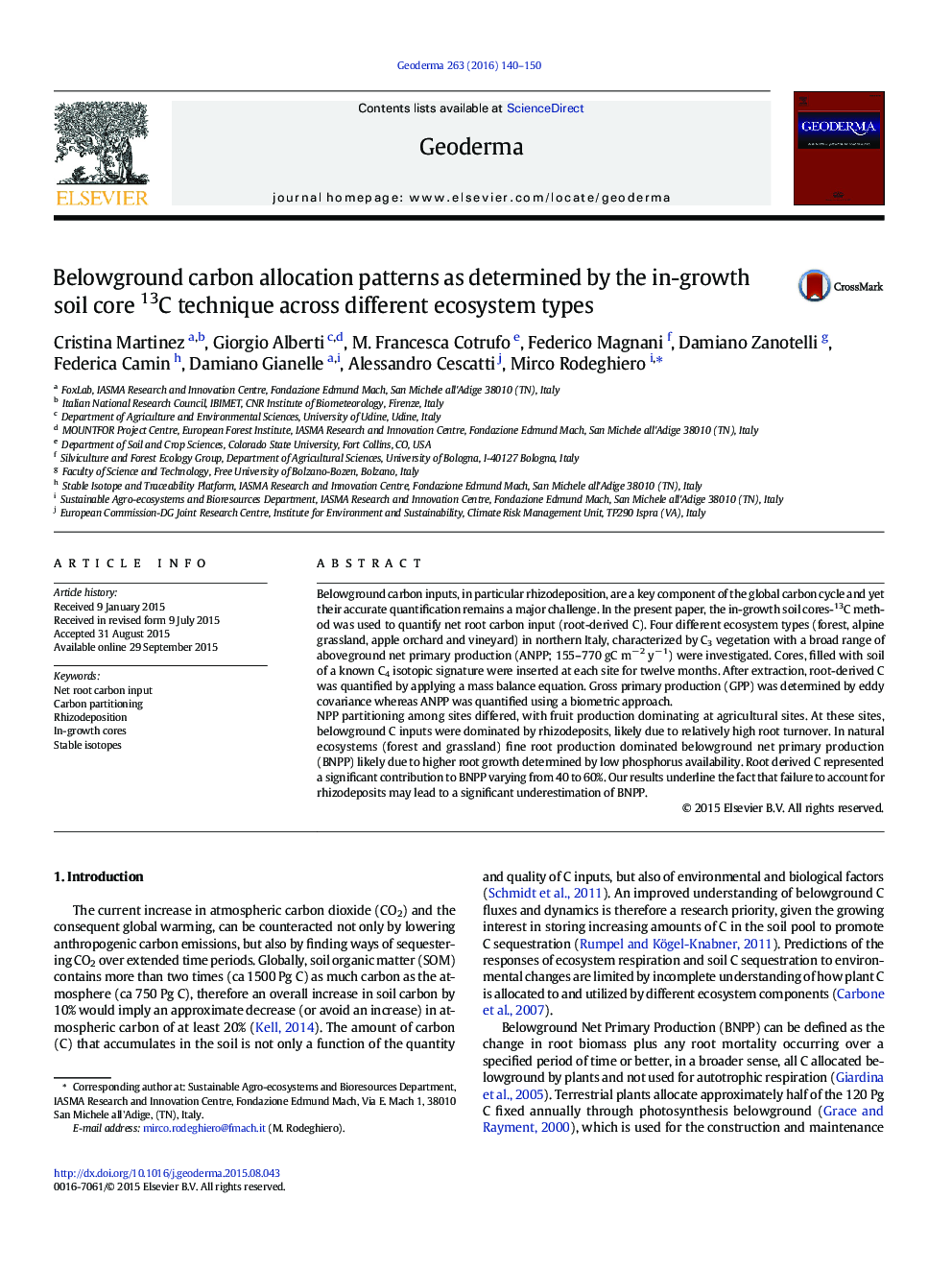| Article ID | Journal | Published Year | Pages | File Type |
|---|---|---|---|---|
| 6408467 | Geoderma | 2016 | 11 Pages |
â¢Net soil carbon input via rhizodeposition was quantified in four ecosystems using the in-growth soil cores-13C method.â¢Natural, phosphorous limited ecosystems seemed to invest more carbon in fine root biomass compared to cultivated ecosystems.â¢Rhizodeposition represents a large and important fraction of belowground carbon input, although often overlooked.
Belowground carbon inputs, in particular rhizodeposition, are a key component of the global carbon cycle and yet their accurate quantification remains a major challenge. In the present paper, the in-growth soil cores-13C method was used to quantify net root carbon input (root-derived C). Four different ecosystem types (forest, alpine grassland, apple orchard and vineyard) in northern Italy, characterized by C3 vegetation with a broad range of aboveground net primary production (ANPP; 155-770 gC mâ 2 yâ 1) were investigated. Cores, filled with soil of a known C4 isotopic signature were inserted at each site for twelve months. After extraction, root-derived C was quantified by applying a mass balance equation. Gross primary production (GPP) was determined by eddy covariance whereas ANPP was quantified using a biometric approach.NPP partitioning among sites differed, with fruit production dominating at agricultural sites. At these sites, belowground C inputs were dominated by rhizodeposits, likely due to relatively high root turnover. In natural ecosystems (forest and grassland) fine root production dominated belowground net primary production (BNPP) likely due to higher root growth determined by low phosphorus availability. Root derived C represented a significant contribution to BNPP varying from 40 to 60%. Our results underline the fact that failure to account for rhizodeposits may lead to a significant underestimation of BNPP.
